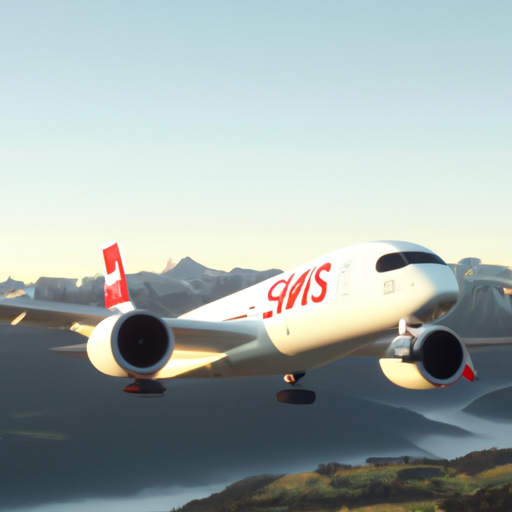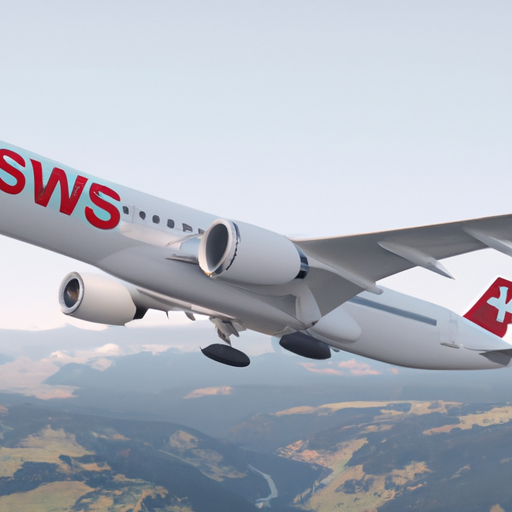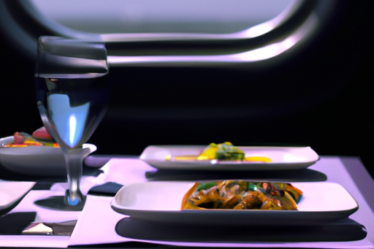
Features and Specifications of SWISS’s Airbus A350s
Swiss International Air Lines, commonly known as SWISS, has recently announced its plans to introduce the Airbus A350 aircraft into its fleet by 2025. This move is part of the airline’s ongoing efforts to enhance its long-haul operations and provide passengers with a superior travel experience.
The Airbus A350 is a state-of-the-art aircraft that offers numerous features and specifications designed to improve passenger comfort and fuel efficiency. One of the key highlights of the A350 is its spacious cabin, which is designed to provide a more comfortable and relaxing environment for passengers during their journey. With wider seats and larger overhead bins, passengers will have more room to stretch out and store their belongings.
In addition to the spacious cabin, the A350 also boasts advanced technology that enhances the overall flying experience. The aircraft is equipped with the latest in-flight entertainment systems, allowing passengers to enjoy a wide range of movies, TV shows, and music during their flight. The A350 also offers improved air quality and reduced noise levels, thanks to its advanced ventilation system and soundproofing materials.
Another notable feature of the A350 is its fuel efficiency. The aircraft is equipped with advanced engines and aerodynamic design, which significantly reduces fuel consumption compared to older aircraft models. This not only benefits the environment by reducing carbon emissions but also allows SWISS to operate more cost-effectively, which can potentially lead to lower ticket prices for passengers.
Furthermore, the A350 offers a range of features that enhance the overall flying experience for passengers. The aircraft is equipped with larger windows, allowing for more natural light and better views during the flight. Additionally, the A350’s advanced lighting system can simulate different lighting conditions, helping passengers adjust to different time zones and reduce jet lag.
SWISS has also announced that the A350 will be configured with a three-class layout, including a First Class cabin, Business Class cabin, and Economy Class cabin. This ensures that passengers of all travel preferences and budgets can enjoy the benefits of flying on the A350. The First Class cabin will offer the utmost luxury and privacy, with spacious seats that can be converted into fully flat beds. The Business Class cabin will provide a comfortable and productive environment for business travelers, with ample space to work and relax. The Economy Class cabin will offer a comfortable and affordable option for leisure travelers, with ergonomic seats and a range of amenities.
In conclusion, SWISS’s introduction of the Airbus A350 into its fleet in 2025 is an exciting development for both the airline and its passengers. The A350’s spacious cabin, advanced technology, fuel efficiency, and range of features will undoubtedly enhance the overall flying experience. Whether traveling for business or leisure, passengers can look forward to a superior travel experience on SWISS’s A350 aircraft. So mark your calendars for 2025 and get ready to experience the future of air travel with SWISS.
Impact of SWISS’s Airbus A350s on the Airline Industry

The arrival of SWISS’s Airbus A350s in 2025 is set to have a significant impact on the airline industry. With their state-of-the-art technology and enhanced passenger experience, these new aircraft are expected to revolutionize the way we travel.
One of the key advantages of the Airbus A350 is its fuel efficiency. These aircraft are designed to consume less fuel compared to their predecessors, resulting in reduced carbon emissions. This is a crucial step towards achieving a more sustainable aviation industry, as airlines strive to minimize their environmental footprint. SWISS’s decision to introduce the A350s demonstrates their commitment to sustainability and their desire to lead the way in eco-friendly air travel.
In addition to their environmental benefits, the Airbus A350s also offer an improved passenger experience. These aircraft are equipped with the latest in-flight entertainment systems, comfortable seating, and larger windows, providing passengers with a more enjoyable journey. The A350s also have a quieter cabin, thanks to advanced noise reduction technology, ensuring a peaceful and relaxing atmosphere for travelers.
The introduction of the A350s will also enable SWISS to expand its route network. These aircraft have a longer range compared to the airline’s current fleet, allowing them to reach new destinations and connect more cities around the world. This will not only benefit travelers by providing them with more options, but it will also boost tourism and business opportunities in the regions served by SWISS.
Furthermore, the arrival of the A350s will enhance SWISS’s competitiveness in the market. With their advanced features and improved efficiency, these aircraft will give the airline an edge over its competitors. Passengers are increasingly seeking airlines that offer a superior travel experience, and the A350s will undoubtedly attract more customers to SWISS. This will help the airline to strengthen its position in the industry and increase its market share.
The impact of SWISS’s A350s goes beyond the airline itself. The introduction of these aircraft will also have a ripple effect on the entire aviation industry. Other airlines may feel compelled to upgrade their fleets to remain competitive, leading to a wave of new aircraft orders. This will benefit aircraft manufacturers, such as Airbus, and create job opportunities in the aviation sector.
Moreover, the arrival of the A350s will drive innovation in the industry. Airlines will be inspired to develop new technologies and features to match or surpass the offerings of the A350s. This will result in a continuous cycle of improvement and advancement, ultimately benefiting passengers with even better travel experiences in the future.
In conclusion, the arrival of SWISS’s Airbus A350s in 2025 will have a profound impact on the airline industry. These aircraft will not only contribute to a more sustainable aviation sector but also provide passengers with an enhanced travel experience. The A350s will enable SWISS to expand its route network, increase its competitiveness, and stimulate innovation in the industry. As we eagerly await their arrival, it is clear that the A350s will shape the future of air travel for years to come.
Potential Routes and Destinations for SWISS’s Airbus A350s
SWISS, the national airline of Switzerland, has recently announced its plans to introduce the Airbus A350 to its fleet in 2025. This exciting news has sparked speculation about the potential routes and destinations that SWISS will operate with these state-of-the-art aircraft. While the airline has not yet released specific details, there are several factors that can give us a glimpse into what we can expect.
One of the key considerations for SWISS when deciding on routes for the Airbus A350 is the aircraft’s range. With a maximum range of over 8,000 nautical miles, the A350 is capable of flying non-stop to many destinations around the world. This opens up a world of possibilities for SWISS, allowing them to explore new markets and expand their network.
One potential route that has been widely discussed is a direct flight from Zurich to Los Angeles. This route is currently served by SWISS’s Boeing 777 aircraft, but the A350’s increased fuel efficiency and range could make it a more viable option. Not only would this provide a more comfortable and modern flying experience for passengers, but it would also reduce the airline’s carbon footprint.
Another destination that could be on SWISS’s radar is Tokyo. Currently, SWISS operates flights to Tokyo’s Narita Airport, but the A350’s range could allow them to consider flying to Haneda Airport instead. Haneda is located closer to downtown Tokyo, making it a more convenient option for travelers. Additionally, the A350’s quieter engines would be a welcome addition in the densely populated city.
In addition to long-haul routes, the A350 could also be used on shorter flights within Europe. SWISS could potentially use the aircraft to increase capacity on popular routes such as Zurich to London or Zurich to Paris. The A350’s spacious cabin and advanced technology would provide a superior travel experience for passengers, setting SWISS apart from its competitors.
It’s worth noting that SWISS is part of the Lufthansa Group, which includes other airlines such as Lufthansa and Austrian Airlines. This opens up the possibility of code-sharing and coordination of routes between the different airlines. For example, SWISS could use the A350 to operate flights to destinations in Asia, while Lufthansa focuses on routes to North America. This would allow the airlines to optimize their networks and offer a wider range of options to passengers.
While we can only speculate at this point, it’s clear that SWISS’s introduction of the Airbus A350 in 2025 will bring exciting new possibilities for travelers. Whether it’s long-haul flights to destinations like Los Angeles and Tokyo, or shorter European routes, the A350’s advanced features and capabilities will undoubtedly enhance the travel experience. As we eagerly await further details from SWISS, one thing is for certain – the arrival of the A350 will mark a new chapter in the airline’s history and open up a world of opportunities for passengers.


